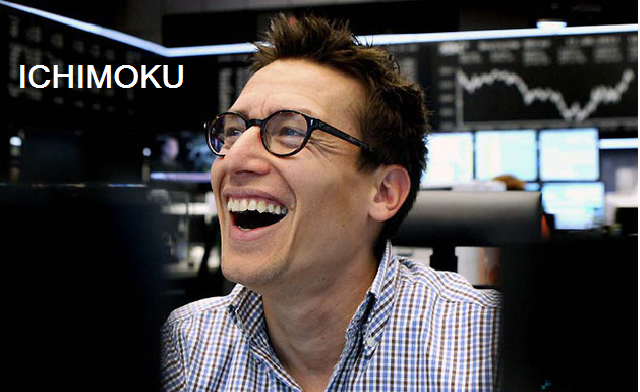
Among the variety of technical indicators that exist in nature, there are a number of reliable and time-tested tools. Ichimoku is one of the brightest representatives of this class of tools to analyze market information. Developed this wonderful indicator was in the first half of the 20th century by one analyst (Goichi Hosoda) from Japan. However, it is presented to the public a means of technical analysis, it was only in the 60 years since its founder thoroughly tested and perfected his analytical tool.
Ichimoku tested on data about the dynamics of the Japanese stock index Nikkei. The name is taken from the alias Ichimoku Ichimoku Sandzhin under which published Goichi Hosoda. Sometimes you can find the full name of the indicator - Ichimoku Kinko Hyo. Talk about the uniqueness of this analytical tool can be infinite. This is a universal assistant capable of performing a range of tasks. The main features are: the identification of market trends, identify key support and resistance lines, creating a signal for opening positions. It is best to work Ichimoku indicator on the daily and weekly charts. The visual indicator is a five-line, which are built on top of the price chart, and the hatched area between the two of them.
Description of the indicator.
Ishimoku arranged so that when it is used in the calculation of the three time intervals:
- A short time interval - 9 periods.
- The average time interval - 26 periods.
- A long time interval - 52 period.
Creator of the indicator was above periods by empirical research. These parameters are classic and can be changed at the discretion of the trader.
Next, consider all 5 lines Ichimoku.
- Tenkan-sen. This line reversal. It typically has a red color represents the average value for a first time interval (9 frames), which is calculated by summing the minimum and maximum values ??during this interval, and dividing the result in half.
- Kijun-sen. The standard line is obtained by dividing by two the sum of the maximum and minimum, but for the second time (26 periods).
- Senkou-span A. Is the sum of the Tenkan and Kijun, divided by two. This line has been moved forward by 26 periods.
- Senkou-span B. Shows the average value for the third interval, offset by 26 periods.
- Chinkou-span. Is the value of closing the current candle, which is offset by 26 periods ago.
Hatched area between Senkou lines is called the Ichimoku cloud. If the market is in the cloud, it is assumed that at the moment there is no trend, and the cloud act as support and resistance levels. Accordingly, if the market is above the clouds, then we are dealing with an upward trend, and if lower, with downward. Ichimoku Cloud is an excellent reference for position entry and exit points.
The intersection of line Chinkou Span prices are signals for opening positions. If the line rises and intersects the graph below, this is a buy signal, and if it dives under the graph from the top down, then up for sale.
Line Kijun-sen - this is the main line, it shows the current trend. If the price is above the line, then the trend is likely to continue. In the case where the price chart begins to cross the line Kijun-sen, then it is a clear sign of the change of the current trend.
Well, in the end we would like to add a few words about the line Tenkan-sen Ichimoku indicator. This line - a line reversal. When the Tenkan-sen is moving anywhere, this means a trend in the market. Lack of direction in the movement of the line and is no trend in the market.
There are many possible uses in the construction of lines Ichimoku trading system. Experimenting with time frames and indicators periods, you can find the optimum configuration that will match the style of trading of a single trader.
To be continued ...
Social button for Joomla


